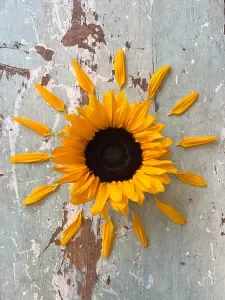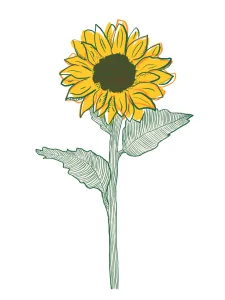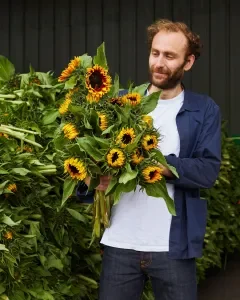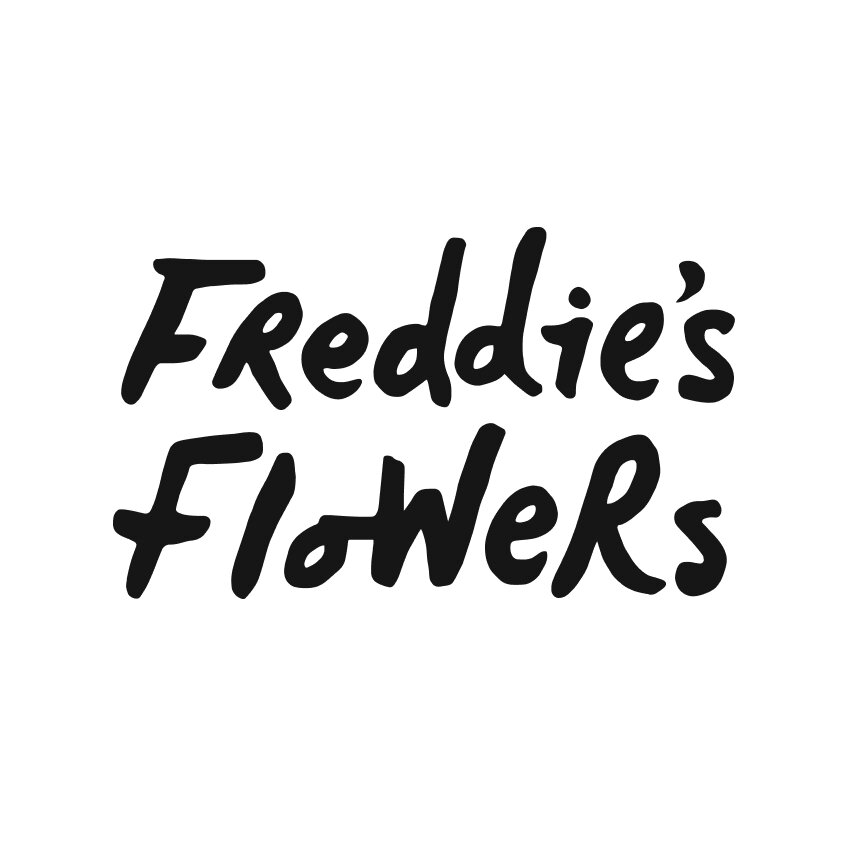
Sunflowers: Everything You Need to Know
We have a challenge for you… and it’s a pretty tough one. Look at a sunflower and try not to smile. Hard, right? It’s like these bright, luminous blooms were created simply to make us beam. (that or be Van Gogh’s muse.) But there’s a lot more hidden history and facts to sunflowers than you might realise… in fact, while they <look> like sunshine in flower form they also have a rich inner life, with every part of this flower from the seeds to the petals can be used for something. Intrigued? Read on…

Where do sunflowers come from?
Looking at a sunflower it would be easy to imagine that they’ve simply been plucked from the blue sky, and transported down to earth so as to give us a closer feel of that cheerful, all encompassing warmth. But, there’s no magic to how they came to be (though in our opinions all flowers are magic).
The history of sunflowers is that they are simply grown, with over 70 species of Helianthus (the plant’s genus) in the family Asteraceae, all native to America, with the crop being so important in Native American gardens some people call sunflowers “the fourth sister” in reference to the Three Sisters: corn, bean and squash. The common sunflower helianthus annuus was first brought to Europe in the 16th century, and the seeds and oil have been popular cooking ingredients ever since.
As for the name, contrary to popular belief, they are not called sunflowers as their blooming heads turn to follow the sun as it tracks across the sky. This sweet story doesn’t quite work as sunflowers face East. Instead, Helianthus translates perfectly from the Greek helios that means ‘sun’ and then Anthos means ‘flower’ named so (no prizes here) because they look so much like the sun.
Home Grown
Your lovely sunflowers are grown in Lincolnshire by our wonderful growers the Robbinson Brothers. Henry and Charles Robinson are sixth generation flower growers – their family farm is 147 years old! They also grow sweet Williams, snowberries, rosehips, and hypericum. In fact they plant a huge 500 acres of sunflowers, making them the biggest sunflower growers in Europe. With the farm surrounded by miles of dykes and hedgerows they pay special attention to looking after local wildlife.
Uses for sunflowers
As well as brightening up our world, particularly on grey days, the sunflower and its seeds are an important food crop and source of oil for both cooking and cosmetics. The different sunflower varieties are also cultivated to produce purple and yellow dyes. Sunflower oil, as well as being used in cooking in kitchens across the globe, is also believed to treat ailments and, in history, sunflowers had a variety of medicinal uses in different tribes.

Sunflowers in Folklore
Imagine arriving in a new country, having never seen a sunflowers before, and suddenly seeing a whole, golden field of them, sparkling in the light. It’s very easy to see why, when the Spaniards first arrived in Peru, they thought sunflowers were a precious metal and were therefore disappointed when they weren’t. This is why sunflowers are sometimes known as “false riches” although we prefer the Victorian Language of Flowers where they are said to signify pride, because the taller varieties loom over most other flowers. They were also said to symbolise appreciation and gratitude… so, if you’re ever looking for a flower gift to thank a friend or a lover for their kindness and time, a sunflower will do all the talking for you.
Other meanings of sunflowers include ambition, constancy, devotion, good luck, loyalty, pride, nourishment, opportunity, power, strength and wealth… so their meanings are as positive as their looks! There are also plenty of cute folklore stories including the sunflower. Looking for a wish to come true? If you cut a sunflower stalk at sunset, while making said wish, the wish will come true before sunset the next day (disclaimer: Freddie’s Flowers cannot be held responsible if your wish doesn’t come true!). It is also said that if you put a sunflower under your bed you will dream about anything you need to know the truth about.
As for the seeds, it’s said if you put three sunflower seeds down a girl’s back she will end up marrying the first boy she sees, which we’re not sure about… and would advise anyone to marry on compatibility not flower folklore! It’s also said that if you wear a necklace of sunflower seeds it is said to protect you from smallpox, but with that one we think we prefer modern medicine!

What to do with your sunflowers…
You don’t have to have a full golden crop of sunflowers to reap the rewards of the seeds. Once you’ve got all your joy out of your sunflowers in the vase hang them up to dry them out, in a few weeks time they will be completely dry and you can rub the sunflowers face and the seeds will drop out.
Collect them all up and you can start sowing sunflower seeds indoors in March, but it is best to wait until they are good sturdy plants, about 30cm tall, before planting outside in April or May.
Up next...
Celebrating our venture into the world of floral art
Celebrating Saatchi Gallery's exhibition Flowers - Flora in Contemporary Art & Culture, we're excited to present our very own large-scale floral art installation.
The Ultimate Guide to Mother’s Day Flowers
Mother’s Day is creeping up fast—just like the moment you realise you haven’t sorted a gift yet. But fear not! A stunning bouquet can save the day, and we’re here to guide you through the best flowers to make Mum’s heart bloom with joy.
